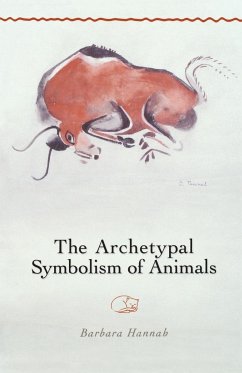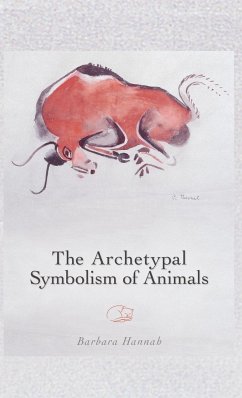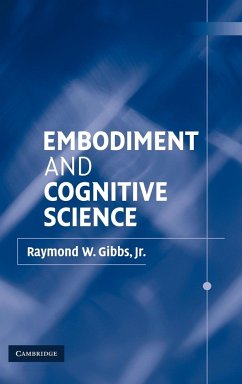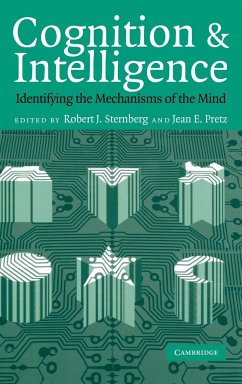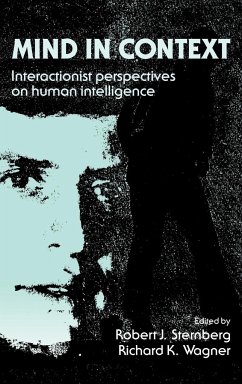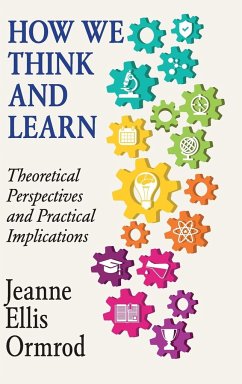
Pretending and Imagination in Animals and Children

PAYBACK Punkte
67 °P sammeln!
It is well known that children's activities are full of pretending and imagination, but it is less appreciated that animals can also show similar activities. This is the first book to focus on comparing and contrasting children's and animals' pretenses and imaginative activities. In this book, overviews of recent research present conflicting interpretations of children's understanding of the psychology of pretense, and describe sociocultural factors which influence children's pretenses. Studies of nonhuman primates provide examples of their pretenses and other simulative activities, explore th...
It is well known that children's activities are full of pretending and imagination, but it is less appreciated that animals can also show similar activities. This is the first book to focus on comparing and contrasting children's and animals' pretenses and imaginative activities. In this book, overviews of recent research present conflicting interpretations of children's understanding of the psychology of pretense, and describe sociocultural factors which influence children's pretenses. Studies of nonhuman primates provide examples of their pretenses and other simulative activities, explore their representational and imaginative capacities and compare their skills with children. Although the psychological requirements for pretending are controversial, evidence presented in this volume suggests that great apes and even monkeys may share capacities for imagination with children, and that children's early pretenses may be less psychological than they appear.
Table of contents:
Foreword Sue Taylor Parker; Preface and acknowledgements; Part I. Historical, Developmental and Comparative Overviews: 1. Imaginative animals, pretending children Robert W. Mitchell; 2. A history of pretense in animals and children Robert W. Mitchell; 3. Pretending as representation: a developmental and comparative view Lorraine McCune and Joanne Agayoff; Part II. Pretense and Imagination in Children: 4. Language in pretense in the second year: what it can tell us about 'pretending' in pretense and the 'know-how' about the mind Edy Veneziano; 5. A longitudinal and cross-sectional study of the emergence of the symbolic function in children between 15 and 19 months of age: pretend play, object permanence understanding and self-recognition Pierre-Marie Baudonnière, Sylvie Margules, Soumeya Belkhenchir, Gwénnaelle Carn, Florence Pèpe and Véronique Warkentin; 6. Caregiver-child social pretend play: what transpires? Robert D. Kavanaugh; 7. Just through the looking-glass: children's understanding of pretense Angeline Lillard; 8. Young children's understanding of pretense and other fictional mental states Jacqueline D. Woolley; 9. Pretend play, metarepresentation and theory of mind Peter K. Smith; 10. Replica toys, stories and a functional theory of mind Greta G. Fein, Lynn D. Darling and Lois A. Groth; 11. Young children's animal-role pretend play Olin Eugene Myers Jr.; 12. Imaginary companions and elaborate fantasy in childhood: discontinuity with nonhuman animals Marjorie Taylor and Stephanie M. Carlson; Part III. Pretense and Imagination in Primates: 13. Pretending in monkeys Anne Zeller; 14. Pretending primates: play and simulation in the evolution of primate societies Peter C. Reynolds; 15. Representational capacities for pretense with scale models and photographs in chimpanzees (Pan troglodytes) Sarah T. Boysen and Valerie A. Kuhlmeier; 16. Pretending in free-ranging rehabilitant orangutans Anne E. Russon; 17. Seeing with the mind's eye: eye-covering play in orangutans and Japanese macaques Anne E. Russon, Paul L. Vasey and Carole Gauthier; 18. Possible precursors of pretend play in nonpretend actions of captive gorillas (Gorilla gorilla) Juan Carlos Gómez and Beatriz Martín-Andrade; 19. Pretending culture: social and cognitive features of pretense in apes and humans Warren P. Roberts and Mark A. Krause; 20. Empathy in a bonobo Ellen J. Ingmanson; 21. Pretend play in a signalling gorilla Marilyn L. Matevia, Francine G. P. Patterson and William A. Hillix; Part IV. Prospects: 22. Exploring pretense in animals and children Robert W. Mitchell; References; Index.
It is well known that children spend much time pretending, but it is less appreciated that animals may do the same. This book compares and contrasts pretending in children and primates, and will make fascinating reading for all those interested in comparative psychology, animal behaviour and evolutionary psychology.
Compares and contrasts pretending and imaginative abilities in children and nonhuman primates.
Table of contents:
Foreword Sue Taylor Parker; Preface and acknowledgements; Part I. Historical, Developmental and Comparative Overviews: 1. Imaginative animals, pretending children Robert W. Mitchell; 2. A history of pretense in animals and children Robert W. Mitchell; 3. Pretending as representation: a developmental and comparative view Lorraine McCune and Joanne Agayoff; Part II. Pretense and Imagination in Children: 4. Language in pretense in the second year: what it can tell us about 'pretending' in pretense and the 'know-how' about the mind Edy Veneziano; 5. A longitudinal and cross-sectional study of the emergence of the symbolic function in children between 15 and 19 months of age: pretend play, object permanence understanding and self-recognition Pierre-Marie Baudonnière, Sylvie Margules, Soumeya Belkhenchir, Gwénnaelle Carn, Florence Pèpe and Véronique Warkentin; 6. Caregiver-child social pretend play: what transpires? Robert D. Kavanaugh; 7. Just through the looking-glass: children's understanding of pretense Angeline Lillard; 8. Young children's understanding of pretense and other fictional mental states Jacqueline D. Woolley; 9. Pretend play, metarepresentation and theory of mind Peter K. Smith; 10. Replica toys, stories and a functional theory of mind Greta G. Fein, Lynn D. Darling and Lois A. Groth; 11. Young children's animal-role pretend play Olin Eugene Myers Jr.; 12. Imaginary companions and elaborate fantasy in childhood: discontinuity with nonhuman animals Marjorie Taylor and Stephanie M. Carlson; Part III. Pretense and Imagination in Primates: 13. Pretending in monkeys Anne Zeller; 14. Pretending primates: play and simulation in the evolution of primate societies Peter C. Reynolds; 15. Representational capacities for pretense with scale models and photographs in chimpanzees (Pan troglodytes) Sarah T. Boysen and Valerie A. Kuhlmeier; 16. Pretending in free-ranging rehabilitant orangutans Anne E. Russon; 17. Seeing with the mind's eye: eye-covering play in orangutans and Japanese macaques Anne E. Russon, Paul L. Vasey and Carole Gauthier; 18. Possible precursors of pretend play in nonpretend actions of captive gorillas (Gorilla gorilla) Juan Carlos Gómez and Beatriz Martín-Andrade; 19. Pretending culture: social and cognitive features of pretense in apes and humans Warren P. Roberts and Mark A. Krause; 20. Empathy in a bonobo Ellen J. Ingmanson; 21. Pretend play in a signalling gorilla Marilyn L. Matevia, Francine G. P. Patterson and William A. Hillix; Part IV. Prospects: 22. Exploring pretense in animals and children Robert W. Mitchell; References; Index.
It is well known that children spend much time pretending, but it is less appreciated that animals may do the same. This book compares and contrasts pretending in children and primates, and will make fascinating reading for all those interested in comparative psychology, animal behaviour and evolutionary psychology.
Compares and contrasts pretending and imaginative abilities in children and nonhuman primates.





